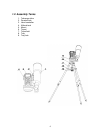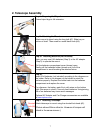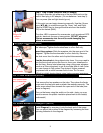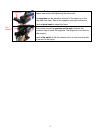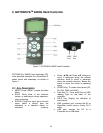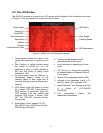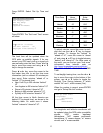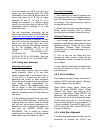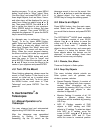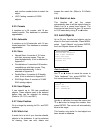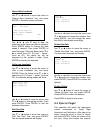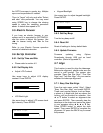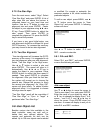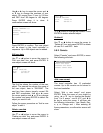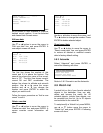
14
If for any reason your GPS can’t pick up a
signal you can manually enter the GPS
coordinates. Press ◄ or ► key to move the
cursor and using ▲ or ▼ key to toggle
between “W” and “E”, “N” and “S”, or to
change the numbers. It is always a good
idea to do your home work to get the GPS
coordinates before traveling to a new
observation site.
The site coordinates information can be
found from internet, such as GPSVisualizer
(http://www.gpsvisualizer.com/geocode
), by
entering the city name or address. In case
you only find the site information in decimal
format you can convert them into d:m:s
format by multiplying the decimal numbers
by 60. For example, N47.53 can be
changed to N47º31'48”: 47.53º = 47º
+0.53º, 0.53º=0.53x60'=31.8',
0.8'=0.8x60"=48". Therefore,
47.53º=47º31'48" or 47d31m48s. Same as
N47º31.8’: 31.8’=31’+0.8’, 0.8’=0.8x60”=48”.
4.2.2. Using your telescope
Selecting an Eyepiece:
1. Always begin viewing with the lowest
power eyepiece. (Note: a 25 mm focal
length eyepiece has a lower power than a
10 mm one.) A formula can be used to
determine the power of each eyepiece:
Telescope focal length divided by eyepiece
focal length equals magnification. Ex.
400mm ÷ 25mm = 16X (magnification). The
rule of thumb is that the magnification
should not be too much larger than the OTA
aperture, otherwise view and color distortion
may occur.
2. A 45° Erecting Diagonal Prism is included
in the R80 or MC90 telescope. The Erecting
Diagonal Prism is used to erect the image
you will see. Astronomical telescopes are
designed in such a way that the image you
see may be UPSIDE DOWN and
REVERSED. This is perfect for viewing
celestial bodies. However, it will feel strange
when observing a land object or a bird.
Focusing Telescope:
1. After selecting the desired eyepiece aim
the telescope tube at a land-based target at
least 200 yards away (e.g. A telephone pole
or building). Fully extend focusing tube by
turning the focus knob.
2. While looking through selected eyepiece,
slowly retract focusing tube by turning
focusing knob until object comes into focus.
Aligning Finderscope:
1. Look through main telescope tube and
establish a well-defined target (see focusing
telescope section). Tighten all lock knobs
(Declination, Latitude, Right Ascension,
Horizontal Axis) so that telescope’s aim is
not disturbed.
2. Turn on the red dot finder and look
through the finder window. Adjust the red
dot alignment screws to center the red dot
on the object.
3. Now, objects located with the finderscope
first will be centered in field of view of the
main telescope.
4.2.3. Go to the Moon
After performing these setups, the mount is
ready to GOTO and track objects. The most
common object will be the Moon.
Press MENU button, select “Select and
Slew” by press ENTER button. Select
“Planets, Sun, Moon”, and using ▲ or ▼
button to select Moon. Press ENTER. The
telescope will automatically slew to the
Moon and lock on. It will automatically begin
to track once it locks on to it. Use the arrow
keys to center the Moon in your eyepiece, if
it is not centered. Press BACK key to stop
GOTO during the slew. Press ENTER key
to stop the tracking.
4.2.4. Initial Star Alignment
A simple alignment/synchronization can be
performed to improve the GOTO and



